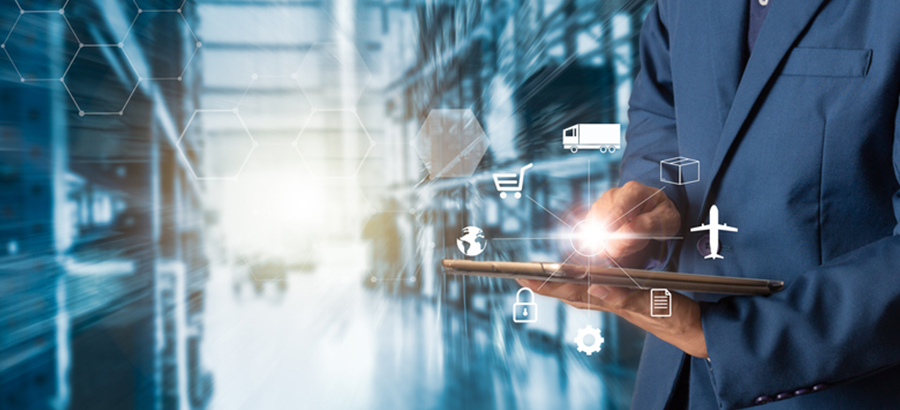The world is still reeling from the effects of the COVID-19 pandemic. For most manufacturers, supply chain disruptions highlighted the need for increased connectivity and improved engagement with both suppliers and customers. The impact of those disruptions has also been far-reaching. A good example of this can be seen now as the global automotive industry faces a global chip shortage. In fact, some analysts believe that the global capacity gap may result in $14 billion in lost revenue.
While this is an example of one industry that is facing the consequences of supply chain disruptions, many manufacturers have seen the benefits of adopting emerging technologies and industry 4.0 to mitigate the impact of major disruptions in the future. From the ability to have the visibility of alternative suppliers through to the ability to consolidate disparate systems, digital transformation is the key to a secure digital future.
The challenge for many of these businesses is understanding which technologies to adopt, when to pursue this transformation, and also how to budget for it. There are a number of technologies that have the potential to make a positive impact in manufacturing and distribution in the next five years.
Plan for your automated warehouse
Fortune 500 companies have billions to invest in automating their warehouses. While Mid-sized manufacturers have some trepidation around a potentially long and expensive, it is still important to at least plan for the journey ahead as soon as possible.
In most cases, it will take three to five years for organizations to be fully automated, and you will still see at least 65% of workers in the warehouse. This is because the automation augments the human capital, it doesn’t replace it, particularly in smaller manufacturing plants. There has been a shift due to the global pandemic and we are seeing more of a push for robots to overtake that augmentation to fill a more autonomous role to decrease the possible transmission of disease for example, but what we are seeing at this point is baby-steps. We’re a long way from a fully robotic scenario with remote monitoring.
Consider a pivot towards e-Commerce
There has been a huge increase in online shopping during the pandemic and many organizations have had to upgrade their online presence to enable e-commerce. What we have therefore seen is that manufacturers started their shift first with online shopping, and then applied contactless delivery in some instances using robots to enable social distancing. There has been increased implementation of digital and contactless payment, with many retailers upgrading their credit card payment systems to allow for tap.
Cloud has enabled more agile online shop fronts where orders could be automatically captured and processed. When you move from 20 online orders a day to 10,000 orders a day, that isn’t something that you can still manage manually. Those manufacturers who had the foresight to move their technology forward a year or two ago and upgraded their ERP systems were able to pivot quickly to plug in payment gateways, which made a big difference for their businesses. The ability to also plug into a connected supply chain and make use of an established third-party system for the retail and distribution of their products also proved a winning combination. This enabled them to extend their supply chain through a connected supply chain. It is critical to look at all potential avenues and not be stuck in your ways if you want to be agile enough to withstand sudden potentially hugely impactful events, such as war or pandemics.
Additive Manufacturing as a business innovation
Another financially attainable technology that has advanced innovation and had a major impact in the manufacturing sector over the past year is additive manufacturing or 3-D printing. Prior to 3-D printing , a part would be drawn on a piece of paper, then put into a CAD drawing, and sent to a plastic mold injection company who would create a prototype. Today, a lot more businesses have access to 3-D printers onsite, and product innovators are able to create the piece directly in CAD and send to the 3-D printer. This advancement is saving large amounts of time and concepts are coming alive a lot faster. A prime example of this is how auto manufacturers were 3-D printing critical ventilator parts in the peak of the pandemic.
Just ask
The secret when planning your transition is to look at your immediate needs and choose technologies that can help you unlock the most value, for the least amount of stress and a more realistic cost. Don’t get locked into one technology – use connected technology that will suit you, enabling you to jump from capturing orders on your laptop at your desk, to using your rugged handheld device in the warehouse, or on your mobile when you’re out and about. A few baby steps like that will take you further into future proofing and risk-proofing your business.
Huge value can be gained in talking to your ERP provider to see how you can increase automation within your organization using a combination of what you currently have available and learning more about how you can use the payment gateways and the connected supply chain to boost your business. By connecting to both customers and suppliers more efficiently, you too can secure your digital future.


